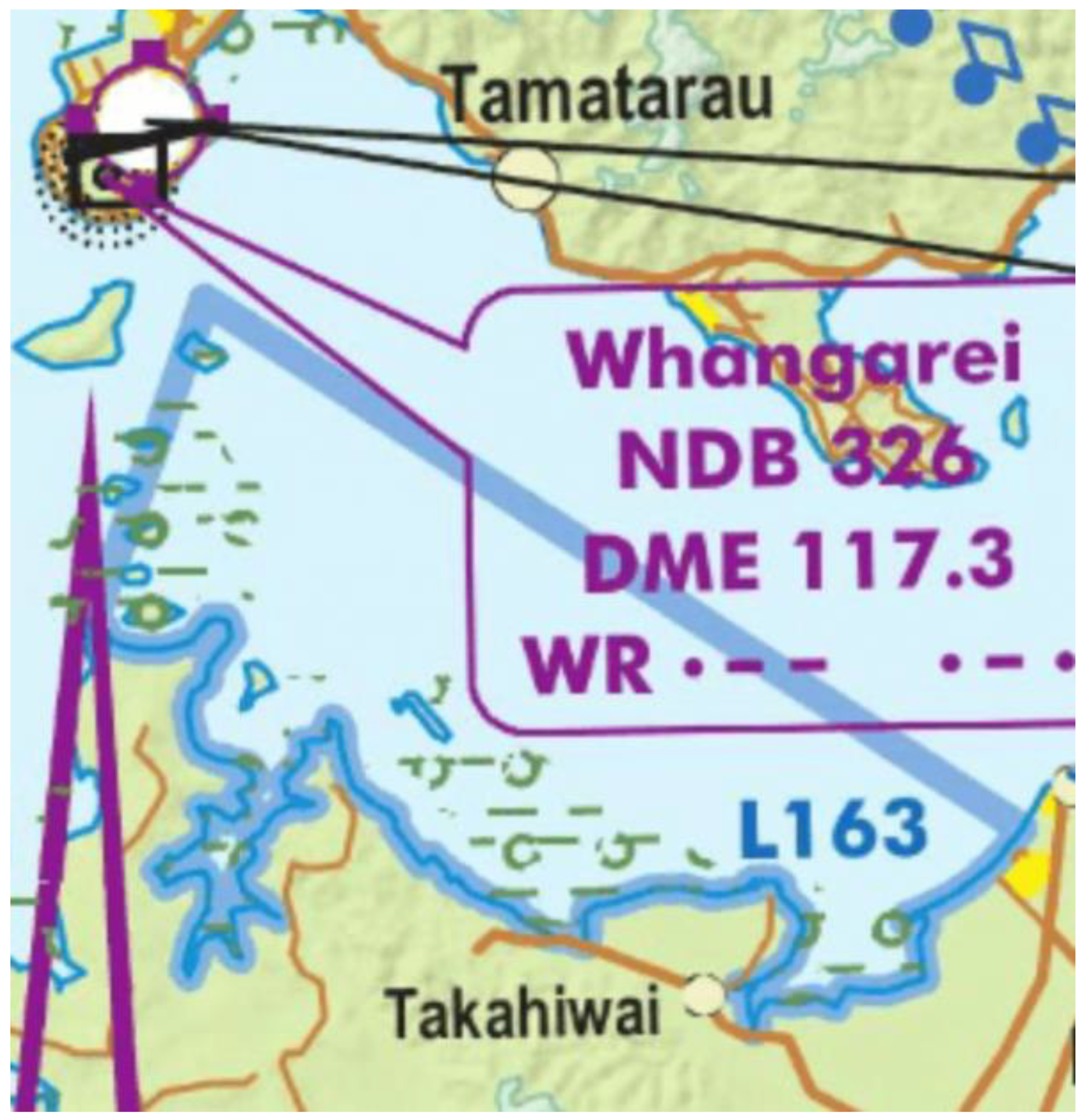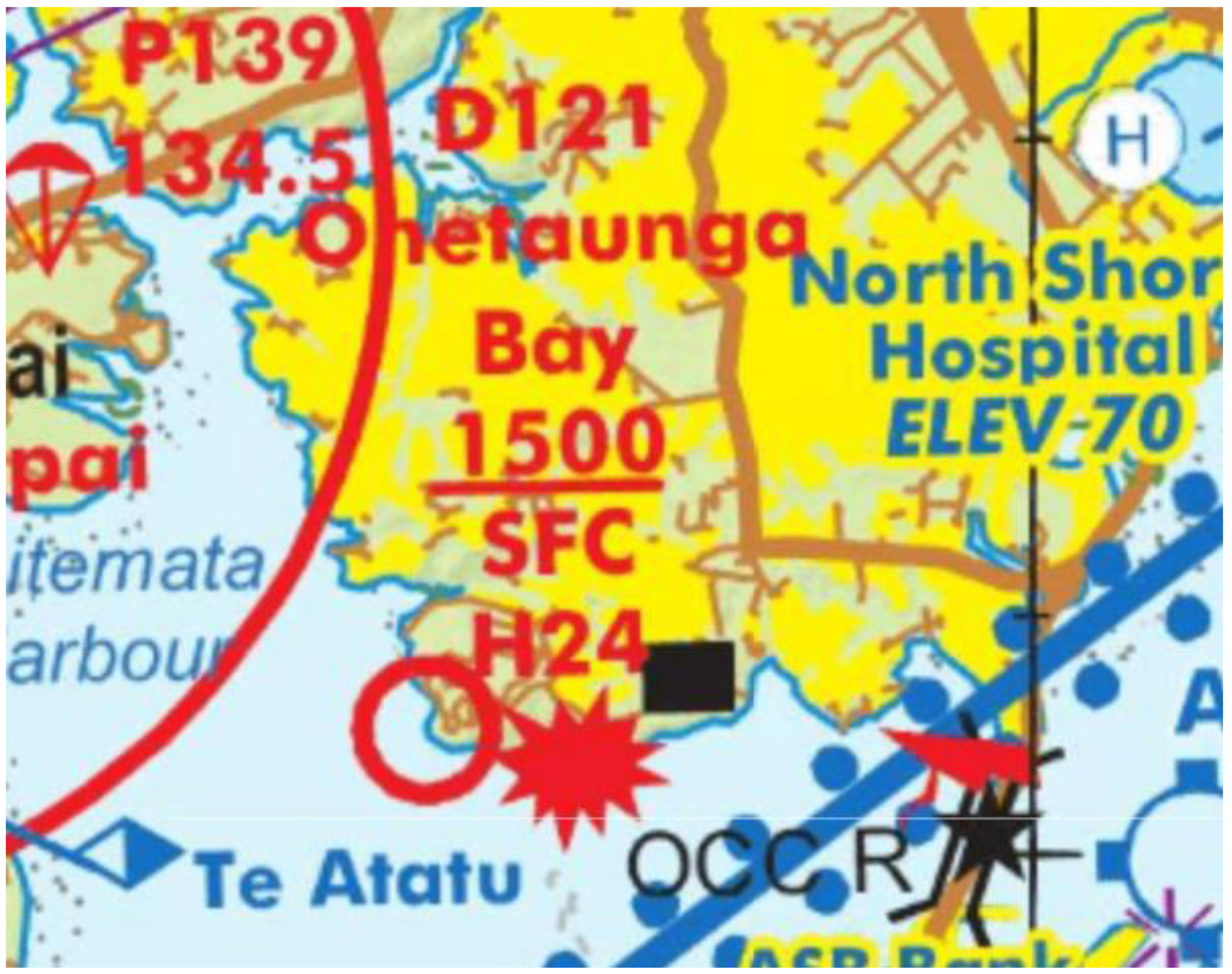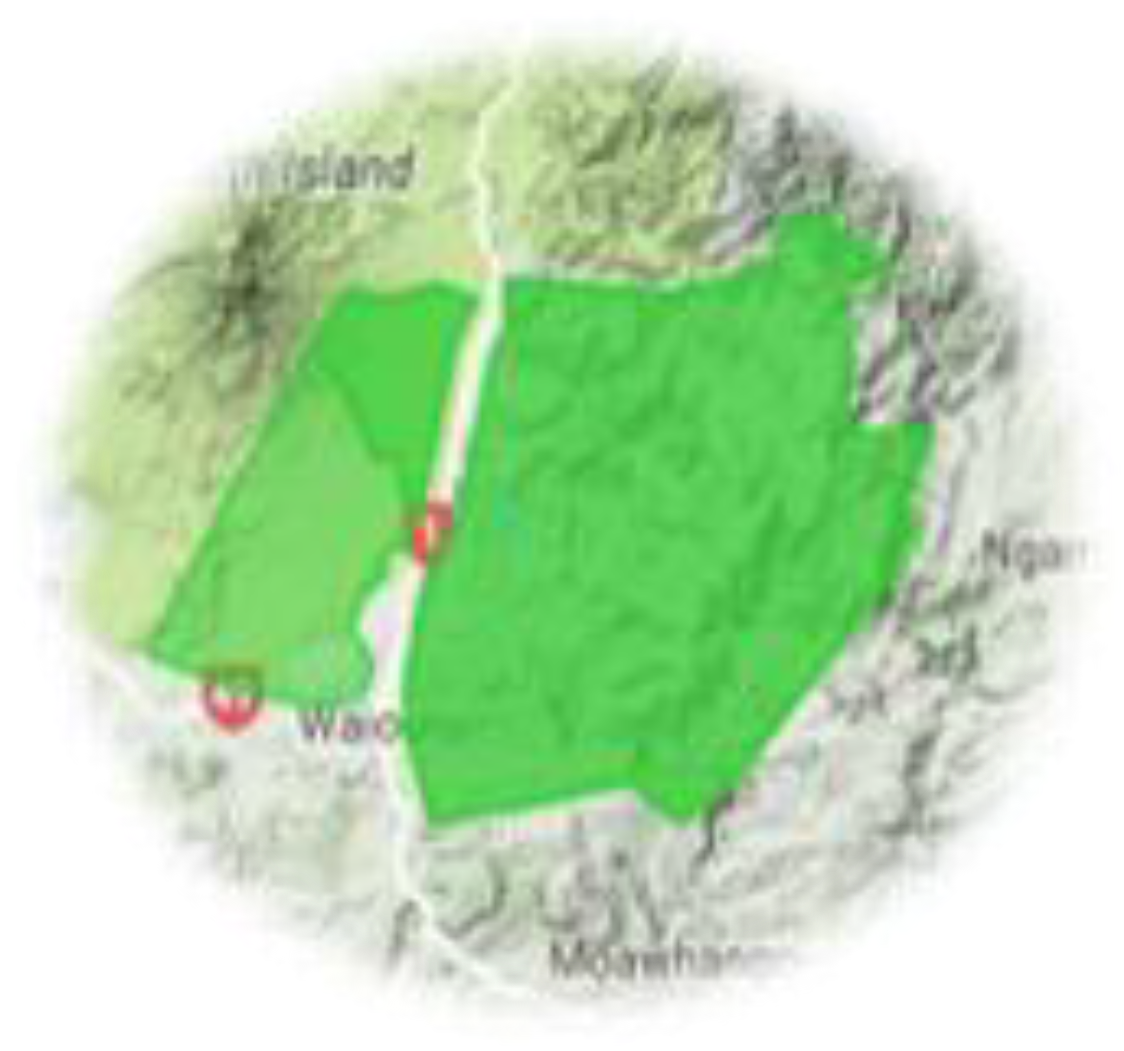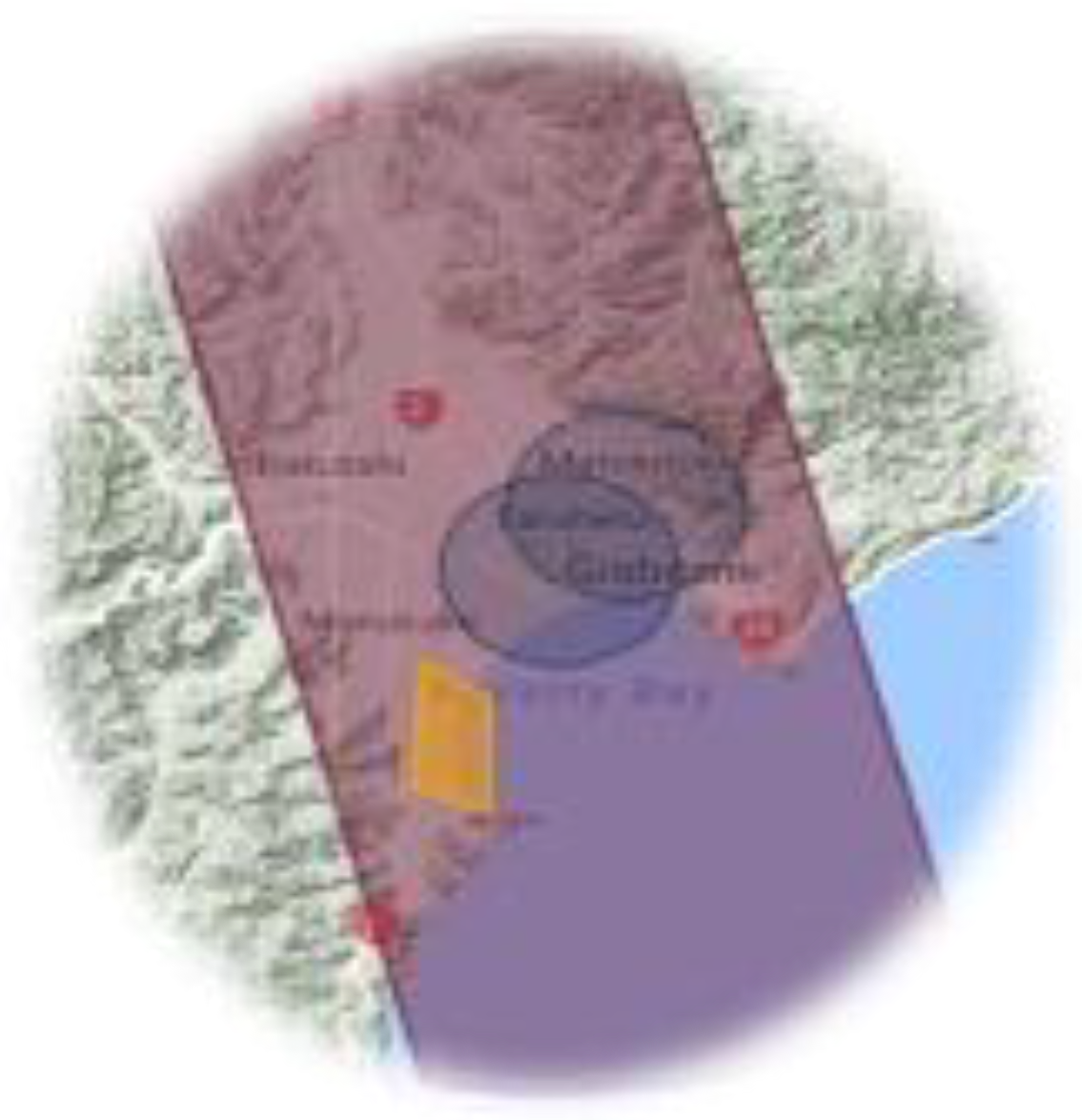Examining New Zealand Unmanned Aircraft Users’ Measures for Mitigating Operational Risks
Abstract
1. Introduction
1.1. Risks of Unmanned Aircraft Operations
1.2. New Zealand as a Study Location
1.3. User-Based Operational Risk Mitigations
1.3.1. AirShare
1.3.2. Visual Navigation Charts (VNCs)
1.3.3. Notices to Airmen (NOTAMs)
1.3.4. Job Safety Assessments (JSAs)
1.3.5. Pre-Flight Checks
1.3.6. Model Flying New Zealand (MFNZ) Site-Specific Requirements
1.3.7. Internal Company Procedures
1.3.8. Part 102 Procedures
1.3.9. Air Band Radio
1.3.10. Summary of User-Based Operational Risk Mitigations
1.4. User Characteristics
1.4.1. User Type
1.4.2. Courses
1.4.3. Operational Competency Assessments (OCAs)
1.4.4. MFNZ Members
1.4.5. UAVNZ Members
1.4.6. Part 102 Certification
2. Materials and Methods
- Must be resident in New Zealand;
- Must have flown an unmanned aircraft before;
- Must be 16 years or older.
- Participants had answer until at least question 9 in Appendix A, otherwise their response would not be meaningful for this study;
- Participants had to be current users of an unmanned aircraft (i.e., excluding past users).
3. Results
3.1. Typical Pre-Flight Operational Risk Mitigations
3.2. Use of Air Band Radio
3.3. Confidence in Identifying and Complying with Airspace Requirements
3.4. Ability to Read VNCs and Use Airshare
4. Discussion
4.1. Are Pre-Flight Checks Enough?
4.2. Education Is Key
4.3. OCAs
4.4. User Type
4.5. MFNZ and the Self-Regulation Model
4.6. Professional Bodies
4.7. Part 102 Certification
4.8. Limitations and Future Research
5. Conclusions
Funding
Institutional Review Board Statement
Data Availability Statement
Acknowledgments
Conflicts of Interest
Appendix A. Survey Questions
- What is your gender?
- Male
- Female
- Other (please specify)
- Prefer not to say
- What is your age?
- Which of the following best describes you?
- Not a current unmanned aircraft user
- Recreational unmanned aircraft user
- Semi-professional commercial unmanned aircraft user (i.e., where less than 50% of your work time is spent on activities related to unmanned aircraft, including flight time, travel time, maintenance, data processing, etc.)
- Professional commercial unmanned aircraft user (i.e., where more than 50% of your work time is spent on activities related to unmanned aircraft, including flight time, travel time, maintenance, data processing, etc.)
- Have you ever done a course on unmanned aircraft operations?
- Yes
- No
- Have you ever passed an operational competency assessment (also known as a flight examination) on an unmanned aircraft?
- Yes
- No
- Are you a member of Model Flying New Zealand?
- Yes
- No
- Are you or your organisation a member of UAVNZ and/or Aviation New Zealand?
- Yes
- No
- Have you ever operated under a Part 102 Operator’s Certificate?
- Yes
- No
- Which of the following do you typically do prior to an unmanned aircraft operation (select all that apply)?
- Log the flight on AirShare
- Check the visual navigation chart for the area
- Check for NOTAMs
- Conduct a job safety assessment
- Do a pre-flight check of your aircraft
- Other actions according to MFNZ site-specific requirements
- Other actions according to your company’s internal procedures
- Other actions according to your company’s approved Part 102 procedures
- Do you ever use air band radio to monitor the local radio frequency when flying an unmanned aircraft?
- Yes
- No
- [If participant answered “yes” to question 10] What sorts of operations do you typically use an air band radio for (select all that apply)?
- Operations within shielded areas
- Operations above 400 ft (120 metres)
- Operations within 4 km of an aerodrome
- Operations in low fly zones
- Operations in controlled airspace
- Other types of operations
- How confident are you in your ability to identify different types of airspace and comply with their requirements (for example, restricted airspace or low fly zones)?
- Extremely confident
- Somewhat confident
- Neither confident nor unconfident
- Somewhat unconfident
- Extremely unconfident
- Do you know how to read a visual navigation chart (VNC)?
- Yes
- No
- [If participant answered “yes” to question 13] Looking at the following airspace from the VNC, which of the following is correct?Figure A1. Excerpt from a VNC demonstrating a low fly zone (L163) that was presented to participants.Figure A1. Excerpt from a VNC demonstrating a low fly zone (L163) that was presented to participants.
- General Aviation Area (GAA)
- Low Flying Zone L163 from SFC to 500 feet AGL [correct answer]
- Transit Lane 163
- Control Zone from SFC to 164ft AGL
- Unsure
- [If participant answered “yes” to question 13] Looking at the following airspace from the VNC, which of the following is correct?Figure A2. Excerpt from a VNC demonstrating a danger area for explosive hazards that was presented to participants.Figure A2. Excerpt from a VNC demonstrating a danger area for explosive hazards that was presented to participants.
- Danger Area Ohetaunga. From SFC to 1500 m for Explosive Hazards. Active during the day.
- Danger Area Ohetaunga. From 500 ft to 1500 ft for Explosive Hazards. Active during the day.
- Danger Area Ohetaunga. From SFC to 1500 ft for Explosive Hazards. Active 24 h. [correct answer]
- Danger Area Ohetaunga. From SFC to 1000 ft for Bombs. Active 24 h.
- Unsure
- Do you ever use AirShare to check airspace requirements?
- Yes
- No
- [If participant answered “yes” to question 16] Using AirShare, you see that the area you wish to operate in is overlaid with a green area, such as in the picture below. What does this mean for your operation?Figure A3. Excerpt from AirShare demonstrating a military operating area that was presented to participants.Figure A3. Excerpt from AirShare demonstrating a military operating area that was presented to participants.
- There is a low fly zone—you cannot operate there under Part 101 rules
- There is a control zone—you need to obtain permission from air traffic control
- It is Department of Conservation land covered with restricted airspace—you need to obtain their permission as the administering authority
- It is a military operating area—you need to obtain prior permission from the designated administering authority [correct answer]
- Unsure
- [If participant answered “yes” to question 16] Using AirShare, you see that the area you wish to operate in is overlaid with a red area, such as in the picture below. What does this mean for your operation?Figure A4. Excerpt from AirShare demonstrating a control zone that was presented to participants.
- There is a low fly zone—you cannot operate there under Part 101 rules
- There is a control zone—you need to obtain permission from air traffic control [correct answer]
- It is a military operating are—you need to obtain prior permission from the designated administering authority
- It is a danger zone—you must consider whether the danger in the area is a risk to your operation or vice versa
- Unsure
Appendix B. Additional Statistical Reporting
Appendix B.1. Associations between Specific Risk Mitigations and User Characteristics
| Risk Mitigation | User Type | Course | OCA | MFNZ | UAVNZ | Part 102 |
|---|---|---|---|---|---|---|
| Log flight on AirShare | Professional and Semi-Professional *** (V = 0.500) | Yes *** (V = 0.135) | - | No *** (V = 0.445) | Yes * (V = 0.073) | Yes *** (V = 0.216) |
| Read VNCs | Professional and Semi-Professional *** (V = 0.396) | Yes *** (V = 0.166) | No * (V = 0.069) | No *** (V = 0.341) | Yes *** (V = 0.144) | Yes *** (V = 0.212) |
| Check NOTAMs | Professional and Semi-Professional *** (V = 0.333) | Yes *** (V = 0.211) | - | No *** (V = 0.285) | Yes * (V = 0.070) | Yes *** (V = 0.252) |
| Conduct JSA | Professional and Semi-Professional *** (V = 0.503) | Yes *** (V = 0.208) | - | No *** (V = 0.267) | Yes ** (V = 0.092) | Yes * (V = 0.281) |
| Pre-flight check | - | Yes ** (V = 0.095) | - | - | - | - |
| MFNZ site-specific requirements | Recreational *** (V = 0.374) | Yes * (V = 0.070) | Yes *** (V = 0.371) | Yes *** (V = 0.648) | - | - |
| Internal company procedures | Professional *** (V = 0.635) | Yes *** (V = 0.256) | Yes ** (V = 0.114) | No *** (V = 0.265) | Yes *** (V = 0.133) | Yes *** (V = 0.369) |
| Part 102 exposition requirements | Professional *** (V = 0.613) | Yes *** (V = 0.204) | Yes *** (V = 0.146) | No *** (V = 0.153) | Yes *** (V = 0.202) | Yes *** (V = 0.599) |
Appendix B.2. Number of Risk Mitigations Employed by Different Users
- The number of risk mitigations employed by those who completed a course (mean rank = 475.93) was statistically significantly higher than for those who did not (mean rank = 342.02), U = 109462, z = 8.758, p < 0.001.
- The number of risk mitigations employed by those who completed an OCA (mean rank = 428.54) was statistically significantly higher than for those who did not (mean rank = 351.72), U = 80217.5, z = 4.549, p < 0.001.
- The number of risk mitigations employed by MFNZ members (mean rank = 387.79) was statistically significantly lower than for non-members (mean rank = 481.56), U = 40490, z = −4.905, p < 0.001.
- The number of risk mitigations employed by UAVNZ members (mean rank = 456.24) was statistically significantly higher than for non-members (mean rank = 398.29), U = 45798, z = 2.645, p = 0.008.
- The number of risk mitigations employed by those who had operated under a Part 102 certificate before (mean rank = 600.45) was statistically significantly higher than for those who had not (mean rank = 380.80), U = 52482.5, z = 9.241, p < 0.001.
Appendix B.3. Associations between Use of Air Band Radio and User Characteristics
| Operation | User Type | Course | OCA | MFNZ | UAVNZ | Part 102 |
|---|---|---|---|---|---|---|
| Air band radio (in general) | Professional and Semi-Professional *** (V = 0.255) | Yes *** (V = 0.185) | Yes *** (V = 0.194) | - | Yes * (V = 0.083) | Yes *** (V = 0.301) |
| Shielded | - | - | - | No ** (V = 0.194) | - | - |
| Above 400 ft above ground level | Professional *** (V = 0.310) | Yes * (V = 0.177) | - | - | - | Yes *** (V = 0.281) |
| Within 4 km of an aerodrome | Professional and Semi-Professional ** (V = 0.219) | Yes ** (V = 0.204) | Yes *** (V = 0.312) | - | - | - |
| Low Fly Zone | Professional *** (V = 0.370) | - | - | No * (V = 0.171) | - | Yes *** (V = 0.258) |
| Controlled Airspace | Professional and Semi-Professional *** (V = 0.415) | Yes *** (V = 0.262) | Yes * (V = 0.153) | No *** (V = 0.259) | - | - |
| Other | Professional and Semi-Professional ** (V = 0.229) | - | - | No ** (V = 0.196) | - | - |
Appendix B.4. Confidence Levels in Identifying and Complying with Airspace Requirements
- The confidence scores of those who completed a course (mean rank = 429.04) were statistically significantly higher than for those who did not (mean rank = 381.83), U = 91000, z = 3.194, p = 0.001.
- The confidence scores of those who completed an OCA (mean rank = 415.74) were statistically significantly higher than for those who did not (mean rank = 376.76), U = 73452, z = 2.392, p = 0.017.
- The difference between the confidence scores for MFNZ members (mean rank = 398.11) and non-members (mean rank = 429.98) was not statistically significant, U = 48197.5, z = −1.728, p = 0.084.
- The difference between the confidence scores for UAVNZ members (mean rank = 427.18) and non-members (mean rank = 400.81) was not statistically significant, U = 41830, z = 1.238, p = 0.216.
- The confidence scores for those who had operated under a Part 102 certificate before (mean rank = 451.89) were statistically significantly higher than for those who had not (mean rank = 398.19), U = 38370, z = 2.343, p = 0.019.
Appendix B.5. VNC Accuracy
- The difference in VNC scores between those who had attended a course (mean rank = 144.27) and those who had not (mean rank = 138.07) was not statistically significant, U = 10260, z = 0.714, p = 0.475.
- The difference in VNC scores between those who completed an OCA (mean rank = 144.64) and those who did not (mean rank = 130.81) was not statistically significant, U = 7660, z = 1.343, p = 0.179.
- The difference in VNC scores between MFNZ members (mean rank = 139.72) and non-members (147.10) was not statistically significant, U = 6895, z = −0.732, p = 0.464.
- The VNC scores for UAVNZ members (mean rank = 118.88) were statistically significantly lower than for non-members (mean rank = 146.61), U = 4804, z = −2.493, p = 0.013.
- The difference in VNC scores between those who had operated under a Part 102 Operator’s certificate before (mean rank = 153.09) and those who had not (mean rank = 138.94) was not statistically significant, U = 6481, z = 1.262, p = 0.207.
Appendix B.6. AirShare Accuracy
- The AirShare scores of those who completed a course (mean rank = 119.04) were statistically significantly higher than for those who did not (mean rank = 93.65), U = 7004, z = 3.378, p < 0.001.
- The difference in AirShare scores between those who completed an OCA (mean rank = 108.89) and those who did not (mean rank = 104.15) was not statistically significant, U = 5682.5, z = 0.620, p = 0.536.
- The AirShare scores for MFNZ members (mean rank = 99.36) were statistically significantly lower than for non-members (mean rank = 115.31), U = 4813.5, z = −2.123, p = 0.034.
- The difference in AirShare scores between UAVNZ members (mean rank = 113.24) non-members (mean rank = 105.86) was not statistically significant, U = 3176, z = 0.712, p = 0.476.
- The difference in AirShare scores between those who had operated under a Part 102 Operator’s certificate before (mean rank = 117.59) and those who had not (mean rank = 104.08) was not statistically significant, U = 4328, z = 1.481, p = 0.139.
References
- Clothier, R.A.; Walker, R.A. Safety risk management of unmanned aircraft systems. In Handbook of Unmanned Aerial Vehicles; Valavanis, K.P., Vachtsevanos, G.J., Eds.; Springer Science: Berlin/Heidelberg, Germany, 2014; pp. 2229–2275. [Google Scholar] [CrossRef]
- Clothier, R.A.; Williams, B.P.; Fulton, N.L. Structuring the safety case for unmanned aircraft system operations in non-segregated airspace. Saf. Sci. 2015, 79, 213–228. [Google Scholar] [CrossRef]
- la Cour-Harbo, A. The value of step-by-step risk assessment for unmanned aircraft. In Proceedings of the 2018 International Conference on Unmanned Aircraft Systems (ICUAS), Dallas, TX, USA, 12–15 June 2018. [Google Scholar] [CrossRef]
- Melnyk, R.; Schrage, D.; Volovoi, V.; Jimenez, H. A third-party casualty risk model for unmanned aircraft system operations. Reliab. Eng. Syst. Saf. 2014, 124, 105–116. [Google Scholar] [CrossRef]
- Washington, A.; Clothier, R.A.; Silva, J. A review of unmanned aircraft system ground risk models. Prog. Aerosp. Sci. 2017, 95, 24–44. [Google Scholar] [CrossRef]
- Henderson, I.L.; Reweti, S.L.; Kamira, R. Using unmanned aerial vehicles to deliver medical and emergency supplies to remote areas. In Unmanned Aerial Vehicles in Civilian Logistics and Supply Chain Management; Kille, T., Bates, P.R., Lee, S.Y., Eds.; IGI Global: Hershey, PA, USA, 2019; pp. 137–168. [Google Scholar] [CrossRef]
- Jeelani, I.; Gheisari, M. Safety challenges of UAV integration in construction: Conceptual analysis and future research roadmap. Saf. Sci. 2021, 144, 105473. [Google Scholar] [CrossRef]
- Koh, L.P.; Wich, S.A. Dawn of drone ecology: Low-cost autonomous aerial vehicles for conservation. Trop. Conserv. Sci. 2012, 5, 121–132. [Google Scholar] [CrossRef]
- Stehr, N.J. Drones: The newest technology for precision agriculture. Nat. Sci. Educ. 2015, 44, 89–91. [Google Scholar] [CrossRef]
- Clothier, R.A.; Palmer, J.L.; Walker, R.A.; Fulton, N.L. Definition of an airworthiness certification framework for civil unmanned aircraft systems. Saf. Sci. 2011, 49, 871–885. [Google Scholar] [CrossRef]
- Perritt, H.H.; Plawinski, A.J. One centimeter over my back yard: Where does federal preemption of state drone regulation start? North Carol. J. Law Technol. 2015, 17, 307–390. [Google Scholar]
- Huang, C.; Chen, Y.-C.; Harris, J. Regulatory compliance and socio-demographic analyses of civil unmanned aircraft systems users. Technol. Soc. 2021, 65, 101578. [Google Scholar] [CrossRef]
- Hayhurst, K.J.; Maddalon, J.M.; Miner, P.S.; DeWalt, M.P.; McCormick, G.F. Unmanned aircraft hazards and their implications for regulation. In Proceedings of the 2006 IEEE/AIAA 25th Digital Avionics Systems Conference, Portland, OR, USA, 15–19 October 2006. [Google Scholar] [CrossRef]
- Magister, T. The small unmanned aircraft blunt criterion based injury potential estimation. Saf. Sci. 2010, 48, 1313–1320. [Google Scholar] [CrossRef]
- Ghasri, M.; Maghrebi, M. Factors affecting unmanned aerial vehicles’ safety: A post-occurrence exploratory data analysis of drones’ accidents and incidents in Australia. Saf. Sci. 2021, 139, 105273. [Google Scholar] [CrossRef]
- Clothier, R.A.; Williams, B.P.; Hayhurst, K.J. Modelling the risks remotely piloted aircraft pose to people on the ground. Saf. Sci. 2018, 101, 33–47. [Google Scholar] [CrossRef]
- Pérez-Castán, J.A.; Comendador, F.G.; Rodríguez-Sanz, A.; Valdés, R.A.; Águeda, G.; Zambrano, S.; Torrecilla, J. Decision framework for the integration of RPAS in non-segregated airspace. Saf. Sci. 2020, 130, 104860. [Google Scholar] [CrossRef]
- Moorkamp, M.; Wybo, J.-L.; Kramer, E.-H. Pioneering with UAVs at the battlefield: The influence of organizational design on self-organization and the emergence of safety. Saf. Sci. 2016, 88, 251–260. [Google Scholar] [CrossRef]
- Washington, A.; Clothier, R.; Neogi, N.; Silva, J.; Hayhurst, K.; Williams, B. Adoption of a Bayesian Belief Network for the system safety assessment of remotely piloted aircraft systems. Saf. Sci. 2019, 118, 654–673. [Google Scholar] [CrossRef]
- Primatesta, S.; Rizzo, A.; La Cour-Harbo, A. Ground risk map for unmanned aircraft in urban environments. J. Intell. Robot. Syst. 2020, 97, 489–509. [Google Scholar] [CrossRef]
- Barr, L.C.; Clothier, R.; Neogi, N.; Silva, J.; Hayhurst, K.; Williams, B. Preliminary risk assessment for small unmanned aircraft systems. In Proceedings of the 17th AIAA Aviation Technology, Integration, and Operations Conference, Denver, CO, USA, 5–9 June 2017. [Google Scholar] [CrossRef]
- Dalamagkidis, K.; Valavanis, K.P.; Piegl, L.A. Evaluating the risk of unmanned aircraft ground impacts. In Proceedings of the 16th Mediterranean Conference on Control and Automation, Ajaccio, France, 25–27 June 2008. [Google Scholar] [CrossRef]
- la Cour-Harbo, A. Quantifying risk of ground impact fatalities for small unmanned aircraft. J. Intell. Robot. Syst. 2019, 93, 367–384. [Google Scholar] [CrossRef]
- ICAO. ICAO Model UAS Regulations. 2021. Available online: https://www.icao.int/safety/UA/Pages/ICAO-Model-UAS-Regulations.aspx (accessed on 28 September 2021).
- CAANZ. Part 101: Gyrogliders and Parasails, Unmanned Aircraft (Including Balloons), Kites, and Rockets—Operating Rules. 2021. Available online: https://www.aviation.govt.nz/assets/rules/consolidations/Part_101_Consolidation.pdf (accessed on 30 September 2021).
- CAANZ. Part 102: Unmanned Aircraft Operator Certification. 2015. Available online: https://www.aviation.govt.nz/assets/rules/consolidations/Part_102_Consolidation.pdf (accessed on 30 September 2021).
- JARUS. Jarus Guidelines on Specific Operations Risk Assessment (SORA). 2019. Available online: http://jarus-rpas.org/sites/jarus-rpas.org/files/jar_doc_06_jarus_sora_v2.0.pdf (accessed on 12 January 2022).
- FAA. Unmanned Aircraft Systems Safety Risk Management Policy. 2019. Available online: https://www.faa.gov/documentLibrary/media/Order/FAA_Order_8040.6.pdf (accessed on 12 January 2022).
- EASA. Annex to Implementing Regulation (EU) 2019/947: UAS Operations in the ‘Open’ and ‘Specific’ Categories. 2019. Available online: https://www.easa.europa.eu/document-library/easy-access-rules/online-publications/easy-access-rules-unmanned-aircraft-systems?page=5 (accessed on 12 January 2022).
- Transport Canada. Drone Safety. 2021. Available online: https://tc.canada.ca/en/aviation/drone-safety (accessed on 12 January 2022).
- Hallowell, M.R.; Gambatese, J.A. Construction safety risk mitigation. J. Constr. Eng. Manag. 2009, 135, 1316–1323. [Google Scholar] [CrossRef]
- Joseph, A.; Dalaklis, D. The international convention for the safety of life at sea: Highlighting interrelations of measures towards effective risk mitigation. J. Int. Marit. Saf. Environ. Aff. Shipp. 2021, 5, 1–11. [Google Scholar] [CrossRef]
- Novello, A.M.; Buitrago, E.; Groso, A.; Meyer, T. Efficient management of nanomaterial hazards in a large number of research laboratories in an academic environment. Saf. Sci. 2020, 121, 158–164. [Google Scholar] [CrossRef]
- AirShare. AirShare. n.d. Available online: https://airshare.co.nz/ (accessed on 6 October 2021).
- AirShare. NOTAMs. 2021. Available online: https://pilot.airshare-utm.io/notam (accessed on 6 October 2021).
- AirShare. Maps. 2021. Available online: https://pilot.airshare-utm.io/maps (accessed on 6 October 2021).
- AirShare. Download the AirShare App. n.d. Available online: https://airshare.co.nz/app-download (accessed on 6 October 2021).
- CAANZ. New Zealand Airspace. 2019. Available online: https://www.aviation.govt.nz/assets/publications/gaps/gap-new-zealand-airspace-web.pdf (accessed on 6 October 2021).
- Hartley, R. Unmanned aerial vehicles in forestry: Reaching for a new perspective. N. Z. J. For. 2017, 62, 31–39. [Google Scholar]
- CAANZ. Part 1: Definitions and Abbreviations. 2021. Available online: https://www.aviation.govt.nz/assets/rules/consolidations/Part_001_Consolidation.pdf (accessed on 8 October 2021).
- CAANZ. Sample Exposition: CAR Part 102 Unmanned Aircraft Operators Certificate. 2015. Available online: https://www.aviation.govt.nz/assets/forms/part-102-sample-exposition.doc (accessed on 8 October 2021).
- Boyd, D.D.; Stolzer, A. Accident-precipitating factors for crashes in turbine-powered general aviation aircraft. Accid. Anal. Prev. 2016, 86, 209–216. [Google Scholar] [CrossRef]
- de Voogt, A.J.; Uitdewilligen, S.; Eremenko, N. Safety in high-risk helicopter operations: The role of additional crew in accident prevention. Saf. Sci. 2009, 47, 717–721. [Google Scholar] [CrossRef]
- AAIB. AAIB Bulletin 3/2021: Alauda Airspeeder Mk II. 2021. Available online: https://assets.publishing.service.gov.uk/media/602bb22f8fa8f50388f9f000/Alauda_Airspeeder_Mk_II_UAS_reg_na_03-21.pdf (accessed on 8 October 2021).
- AAIU. Safety Investigation Report: Accident to a UAV Navigation Atlantice/Oculus at Dizy-Le-Gros, France on 29 February 2016. 2017. Available online: https://mobilit.belgium.be/sites/default/files/downloads/accidents/final_report_2016-aii-01.pdf (accessed on 8 October 2021).
- ATSB. Airspace Incursion Involving Unmanned Airship, Airship 11. 2013. Available online: https://www.atsb.gov.au/media/4090797/AO-2012-143%20Final.pdf (accessed on 8 October 2021).
- MFNZ. MFNZ Members Manual. 2018. Available online: https://www.modelflyingnz.org/docs/general/MFNZ_Members_Manual_2018_Rev_0.pdf (accessed on 11 October 2021).
- MFNZ. About Us. 2021. Available online: https://www.modelflyingnz.org/aboutus.html (accessed on 28 September 2021).
- Clarke, R.; Bennett Moses, L. The regulation of civilian drones’ impacts on public safety. Comput. Law Secur. Rev. 2014, 30, 263–285. [Google Scholar] [CrossRef]
- Claesson, A.; Fredman, D.; Svensson, L.; Ringh, M.; Hollenberg, J.; Nordberg, P.; Rosenqvist, M.; Djarv, T.; Österberg, S.; Lennartsson, J.; et al. Unmanned aerial vehicles (drones) in out-of-hospital-cardiac-arrest. Scand. J. Trauma Resusc. Emerg. Med. 2016, 24, 124. [Google Scholar] [CrossRef]
- Siean, A.-I.; Vatavu, R.-D.; Vanderdonckt, J. Taking that perfect aerial photo: A synopsis of interactions for drone-based aerial photography and video. In Proceedings of the ACM International Conference on Interactive Media Experiences, Virtual Event, 21–23 June 2021. [Google Scholar] [CrossRef]
- CAANZ. Vector Online: Slow Down Those Radio Calls. 2021. Available online: https://www.aviation.govt.nz/about-us/media-releases/show/vector-online-slow-down-those-radio-calls (accessed on 11 October 2021).
- CAANZ. Plane Talking: A Guide to Good Radio Use. 2012. Available online: https://www.aviation.govt.nz/assets/publications/gaps/Plane_Talking.pdf (accessed on 11 October 2021).
- Molesworth, B.R.C.; Estival, D. Miscommunication in general aviation: The influence of external factors on communication errors. Saf. Sci. 2015, 73, 73–79. [Google Scholar] [CrossRef]
- CAANZ. Training to Fly Unmanned Aircraft. 2021. Available online: https://www.aviation.govt.nz/drones/training-to-fly-unmanned-aircraft/ (accessed on 1 October 2021).
- Aviation New Zealand. UAVNZ. 2021. Available online: https://www.aia.org.nz/Divisions/UAVNZ.html (accessed on 28 September 2021).
- Aviation New Zealand. UAVNZ Code of Conduct. 2015. Available online: https://www.aia.org.nz/site/aianz/UAVNZ%20Code%20of%20Conduct%20v2.2%20(1)%20(1).pdf (accessed on 28 September 2021).
- Henderson, I.L. Unmanned Aircraft Users in New Zealand. Figshare 2021. [Google Scholar] [CrossRef]
- Cohen, J. Statistical Power Analysis for the Behavioral Sciences, 2nd ed.; Lawrence Erlbaum Associates: Hillsdale, NJ, USA, 1988. [Google Scholar]
- Anderson, N.H. Scales and statistics: Parametric and nonparametric. Psychol. Bull. 1961, 58, 305–316. [Google Scholar] [CrossRef]
- Siegel, S. Nonparametric Statistics for the Behavioural Sciences; McGraw-Hill: New York, NY, USA, 1956. [Google Scholar]
- Agresti, A. Categorical Data Analysis, 3rd ed.; Wiley: Hoboken, NJ, USA, 2013. [Google Scholar]
- Gerald, B. A brief review of independent, dependent and one-sample t-test. Int. J. Appl. Math. Theor. Phys. 2018, 4, 50–54. [Google Scholar] [CrossRef]
- Kruskal, W.H.; Wallis, W.A. Use of ranks in one-criterion variance analysis. J. Am. Stat. Assoc. 1952, 47, 583–621. [Google Scholar] [CrossRef]
- Dunn, O.J. Multiple comparisons using rank sums. Technometrics 1964, 6, 241–252. [Google Scholar] [CrossRef]
- Bonferroni, C. Teoria statistica delle classi e calcolo delle probabilita. Pubbl. R Ist. Super. Sci. Econ. Commericiali Firenze 1936, 8, 3–62. [Google Scholar]
- Hart, A. Mann-Whitney test is not just a test of medians: Differences in spread can be important. BMJ 2001, 323, 391–393. [Google Scholar] [CrossRef]
- Dinneen, L.C.; Blakesley, B.C. Algorithm AS 62: A generator for the sampling distribution of the Mann-Whitney U statistic. J. R. Stat. Soc. Ser. C 1973, 22, 269–273. [Google Scholar] [CrossRef]
- O’Connell, A.A. Logistic Regression Models for Ordinal Response Variables; Sage: Thousand Oaks, CA, USA, 2006. [Google Scholar] [CrossRef]
- ATSB. Aircraft Separation Issue Involving an Ayres S2R, VH-WBK and an Unmanned Aerial Vehicle. 2014. Available online: https://www.atsb.gov.au/media/4698157/ao-2013-167_final.pdf (accessed on 11 October 2021).
- Mirot, A. The future of unmanned aircraft systems pilot qualification. J. Aviat./Aerosp. Educ. Res. 2013, 22, 19–30. [Google Scholar] [CrossRef][Green Version]
- Krosnick, J.A. Survey research. Annu. Rev. Psychol. 1999, 50, 537–567. [Google Scholar] [CrossRef]
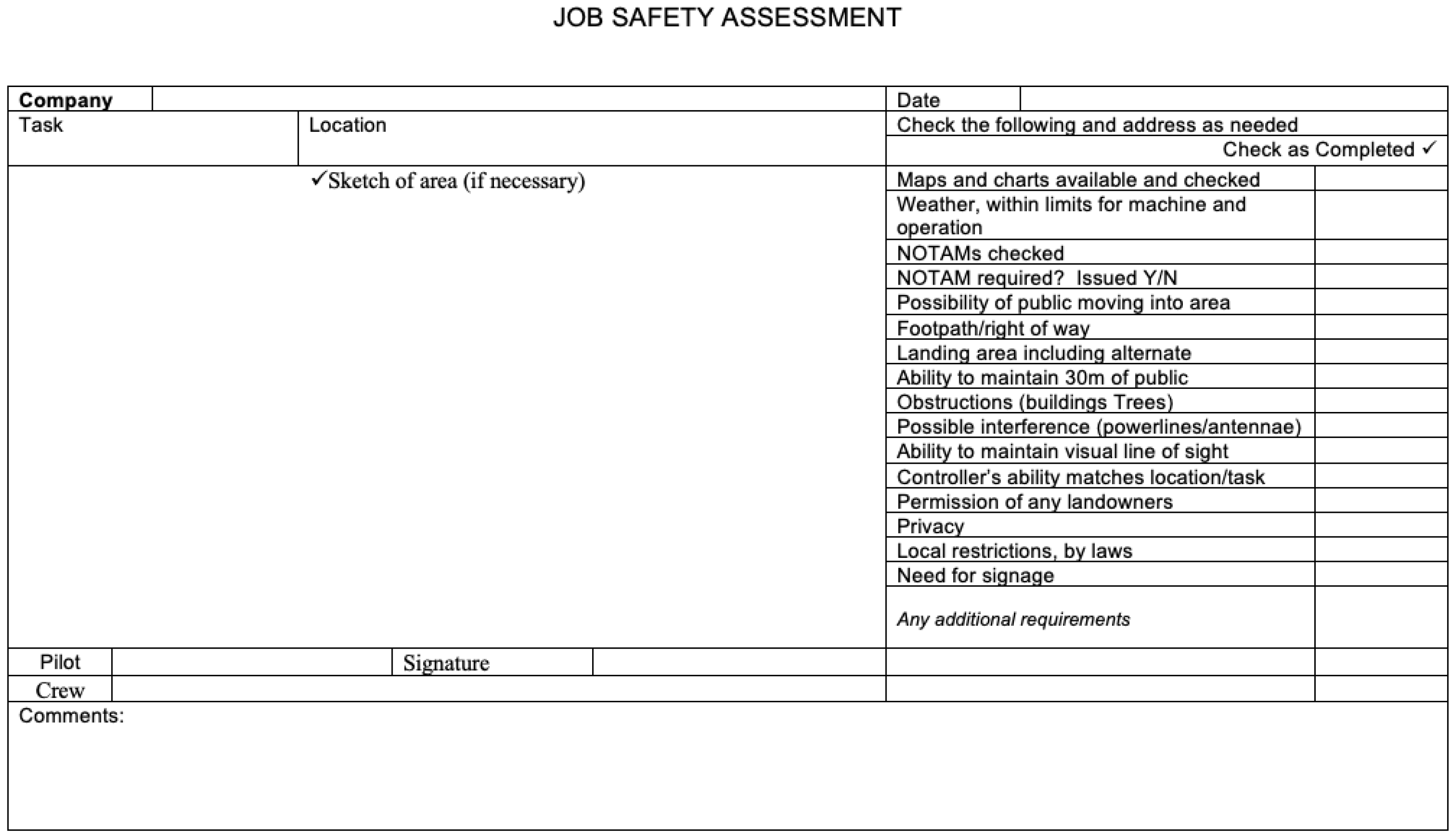
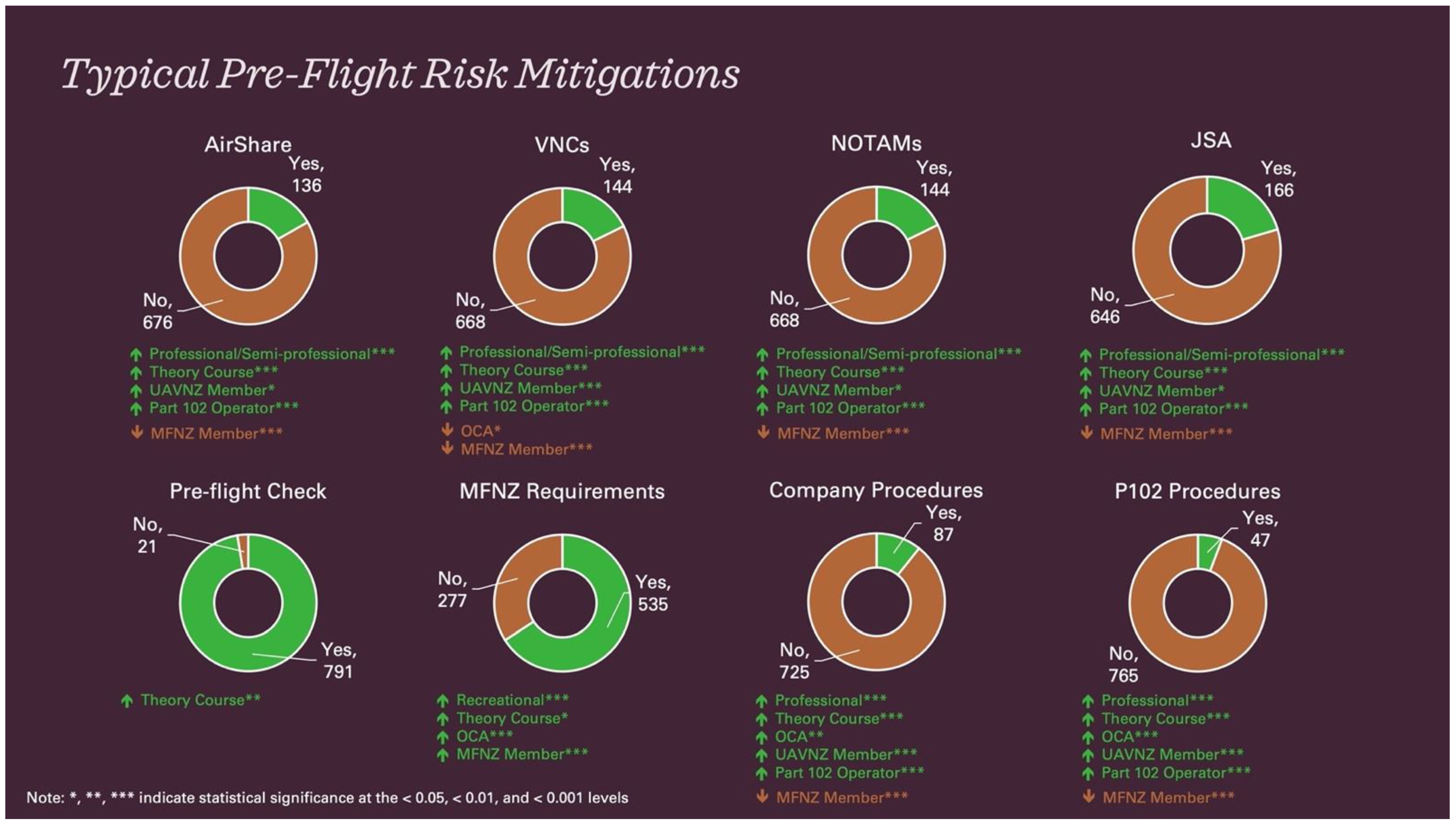
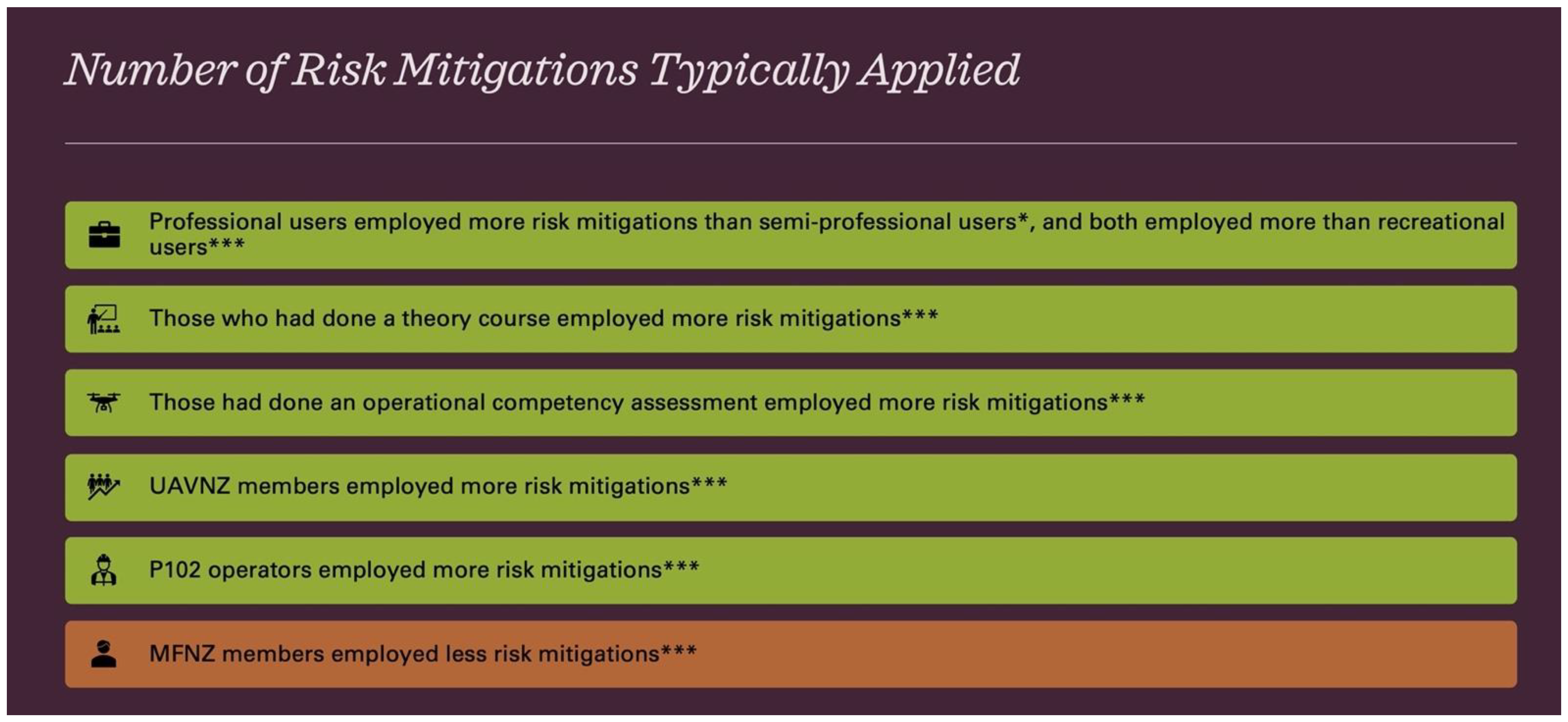
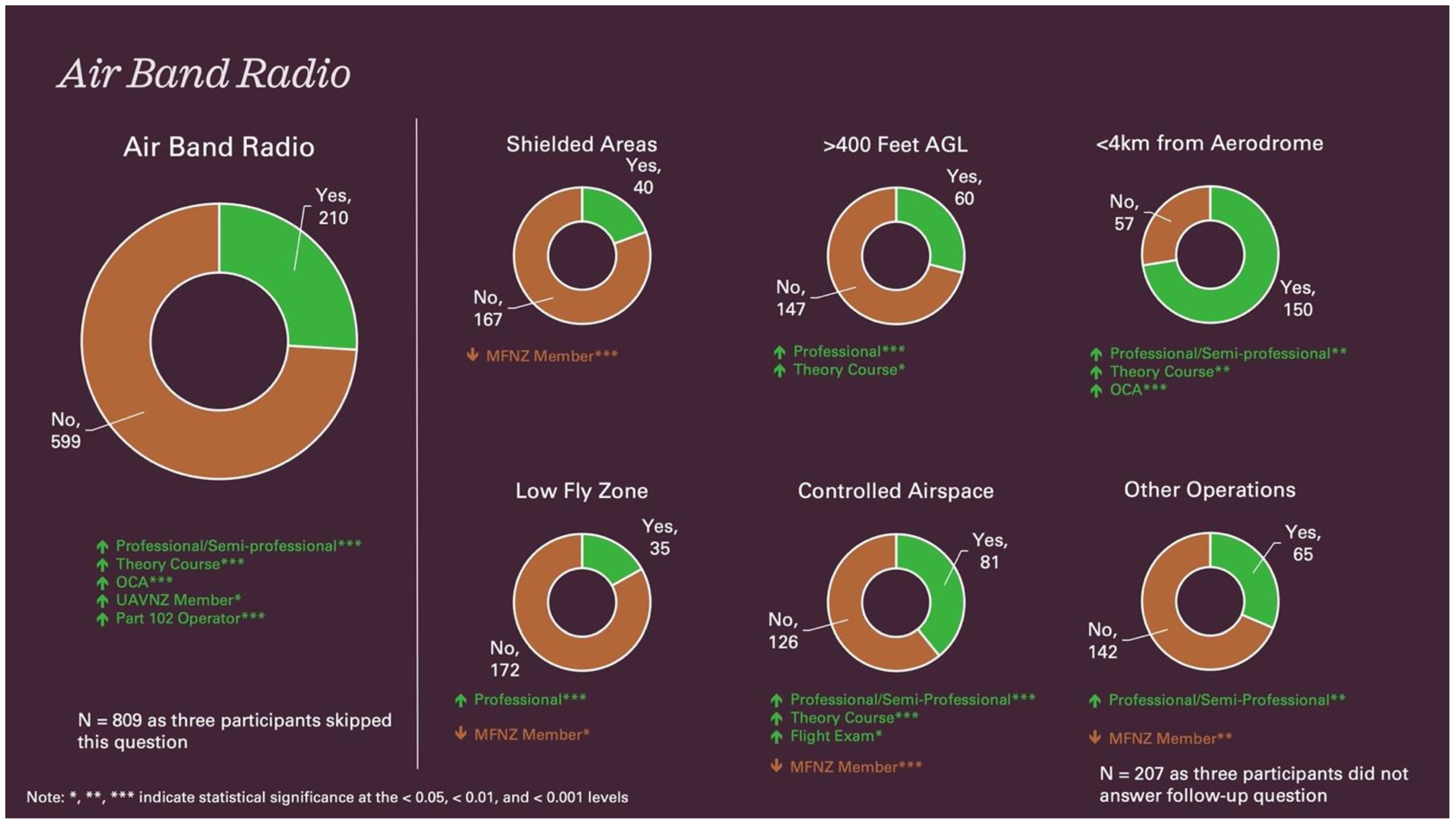
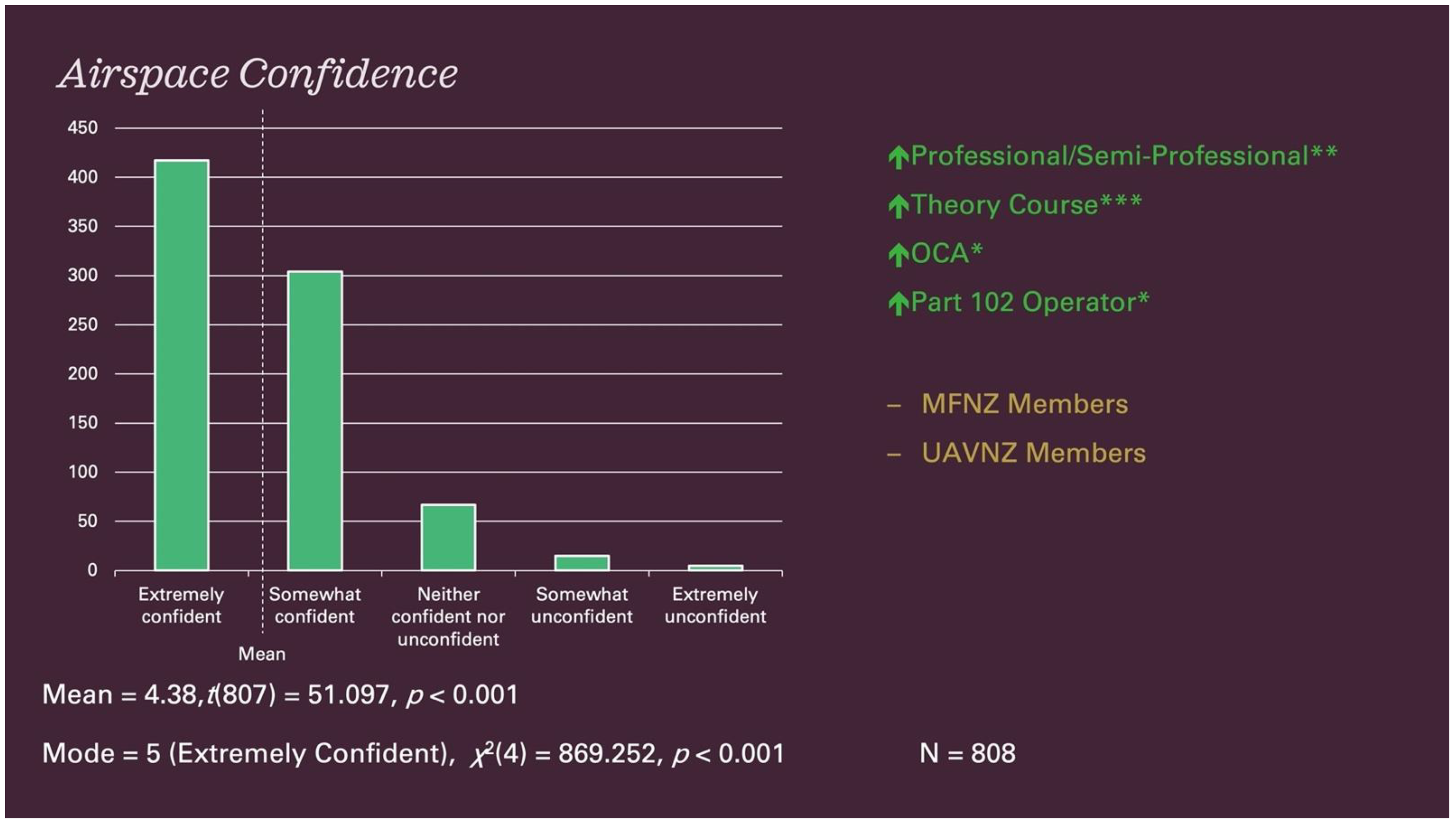
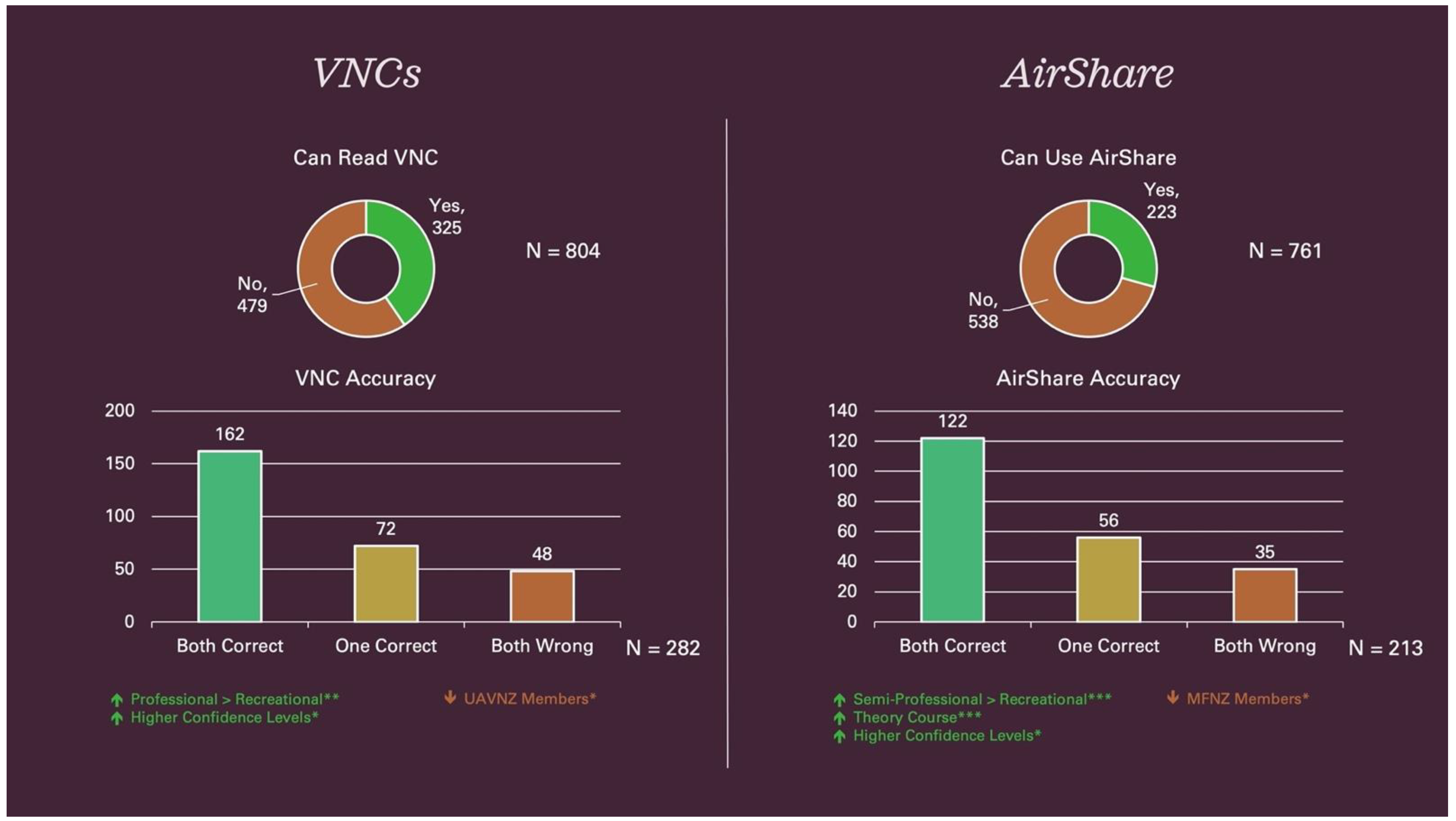
| Risk Type | Risk Mitigations | |
|---|---|---|
| Airborne and Ground | Procedures Frangible aircraft Flight planning Pilot situational awareness Maintenance Organisational procedures Night operations Automated recovery systems Failure warning systems Familiarisation with the operating area Geo-fencing Cyber security Protected area | User operational planning High visibility paint Maintenance check of aircraft Maintenance check of equipment Pilot training Airworthiness Aircraft size Aircraft weight Aircraft velocity Aircraft type Emergency systems Low altitude operations |
| Airborne | Airspace segregation Air traffic services Visual separation Collision avoidance system Radio broadcasts ADS-B In and Out Navigation lighting Listening to air band radio Visual observers | Issue a NOTAM Read NOTAMs Operate in restricted airspace Operate in danger areas Operate in controlled airspace Engagement with local airspace users Operate where there are low activity levels Chase plane |
| Ground | Operate away from people and property Establish recovery or ditching points Containment systems Surveying operating environment Notifying public Parachute systems | Personal protective equipment Emergency response equipment First aid training Low population density Glide capability |
| Risk Mitigation | Reduces Airborne Risk | Reduces Ground Risk |
|---|---|---|
| Logging flight on AirShare | ✓ | - |
| Checking VNCs | ✓ | - |
| Checking NOTAMs | ✓ | - |
| Conducting a JSA | ✓ | ✓ |
| Pre-flight check | ✓ | ✓ |
| MFNZ internal procedures | ✓ | ✓ |
| Internal company procedures | ✓ | ✓ |
| Part 102 procedures | ✓ | ✓ |
| Air band radio | ✓ | - |
| Demographic Variable | N | Course | OCA | MFNZ | UAVNZ | Part 102 |
|---|---|---|---|---|---|---|
| Recreational User | 716 | 313 (43.72%) | 501 (69.97%) | 61 (86.82%) | 88 (12.29%) | 53 (7.40%) |
| Semi-Professional User | 53 | 37 (69.81%) | 38 (71.69%) | 16 (30.19%) | 13 (24.53%) | 10 (18.87%) |
| Professional User | 43 | 41 (95.35%) | 40 (93.02%) | 15 (34.88%) | 14 (32.56%) | 32 (74.42%) |
| Completed Theory Course | 391 | - | 349 (89.26%) | 321 (82.10%) | 74 (18.93%) | 74 (18.93%) |
| Passed OCA | 579 | 349 (60.28%) | - | 516 (89.12%) | 86 (14.85%) | 91 (15.72%) |
| MFNZ Member | 650 | 321 (49.38%) | 516 (79.38%) | - | 98 (15.08%) | 68 (10.46%) |
| UAVNZ Member | 115 | 74 (64.35%) | 86 (74.78%) | 98 (85.22%) | - | 32 (27.83%) |
| Part 102 Operator | 95 | 74 (77.89%) | 91 (95.79%) | 68 (71.58%) | 32 (33.68%) | - |
Publisher’s Note: MDPI stays neutral with regard to jurisdictional claims in published maps and institutional affiliations. |
© 2022 by the author. Licensee MDPI, Basel, Switzerland. This article is an open access article distributed under the terms and conditions of the Creative Commons Attribution (CC BY) license (https://creativecommons.org/licenses/by/4.0/).
Share and Cite
Henderson, I.L. Examining New Zealand Unmanned Aircraft Users’ Measures for Mitigating Operational Risks. Drones 2022, 6, 32. https://doi.org/10.3390/drones6020032
Henderson IL. Examining New Zealand Unmanned Aircraft Users’ Measures for Mitigating Operational Risks. Drones. 2022; 6(2):32. https://doi.org/10.3390/drones6020032
Chicago/Turabian StyleHenderson, Isaac Levi. 2022. "Examining New Zealand Unmanned Aircraft Users’ Measures for Mitigating Operational Risks" Drones 6, no. 2: 32. https://doi.org/10.3390/drones6020032
APA StyleHenderson, I. L. (2022). Examining New Zealand Unmanned Aircraft Users’ Measures for Mitigating Operational Risks. Drones, 6(2), 32. https://doi.org/10.3390/drones6020032





